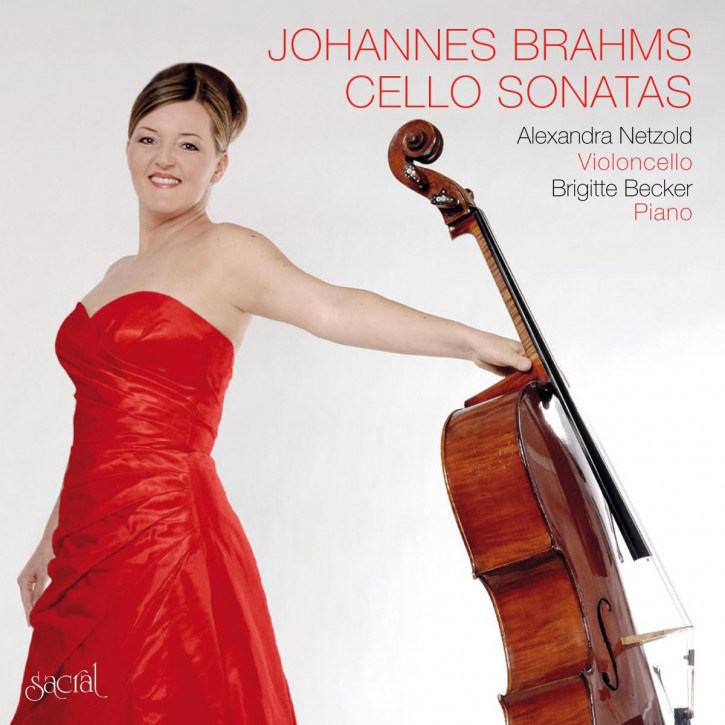Alexandra Netzold / Brigitte Becker: JOHANNES BRAHMS - CELLO SONATAS
Alexandra Netzold's sixth CD is a fitting tribute to the German composer as a conclusion to the Brahms year. The CD juxtaposes the two cello sonatas, op. 38 and 99, which play a central role for every cellist. At the young age of 19, she won one of her first international music competitions with works by Brahms, making his music a constant companion in her musical career. Despite their contrasting styles, these two sonatas come together on this special CD.
€ 15,95
incl. 19 % VAT
excl. shipping costs
Tracklist (7) Aufklappen...
| Product.Nr.: | SACD9275 |
|---|---|
| Artist: | Alexandra Netzold |
| Release | 24.02.2023 |
| Hersteller/Manufacturer |
Bauer Studios GmbH Markgröninger Straße 46 71634 Ludwigsburg info@bauerstudios.de |
product description
Alexandra Netzold's sixth CD appropriately dedicates itself to the German composer as a conclusion to the Brahms year. The CD juxtaposes the two cello sonatas, op. 38 and op. 99, which play a central role for every cellist. Already at the age of 19, she won one of her first international music competitions with works by Brahms, making his music a constant companion in her musical career. The somewhat contrasting sonatas come together on this special CD.
It was not until the 19th century that the full range of the cello's diverse cantabile and virtuosic possibilities as a solo instrument in concert and chamber music was discovered. The development, which began with Haydn and Boccherini, culminated in the great cello concertos of Schumann and Elgar; it also found expression in chamber music, including Beethoven's and Schubert's cello sonatas, and in the work of the Hamburg composer Johannes Brahms, who, even here, with his unmistakably personal expression, felt strongly committed to the classical heritage.
The two sonatas for cello and piano belong to very different creative periods of Brahms. Between the beginning of the first in E minor, op. 38, and the completion of the second in F major, op. 99, lies a period of twenty-four years (1862 - 1886), which is spanned by the immense arch of the four symphonies.
It was not until the 19th century that the full range of the cello's diverse cantabile and virtuosic possibilities as a solo instrument in concert and chamber music was discovered. The development, which began with Haydn and Boccherini, culminated in the great cello concertos of Schumann and Elgar; it also found expression in chamber music, including Beethoven's and Schubert's cello sonatas, and in the work of the Hamburg composer Johannes Brahms, who, even here, with his unmistakably personal expression, felt strongly committed to the classical heritage.
The two sonatas for cello and piano belong to very different creative periods of Brahms. Between the beginning of the first in E minor, op. 38, and the completion of the second in F major, op. 99, lies a period of twenty-four years (1862 - 1886), which is spanned by the immense arch of the four symphonies.



